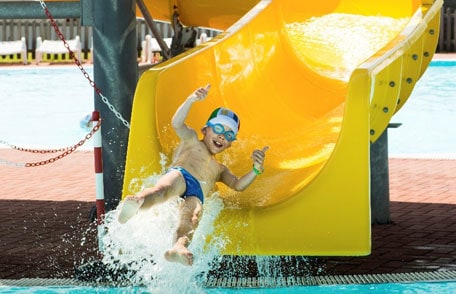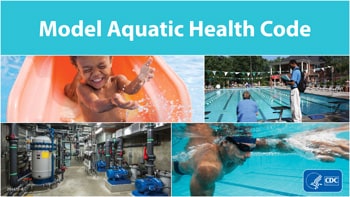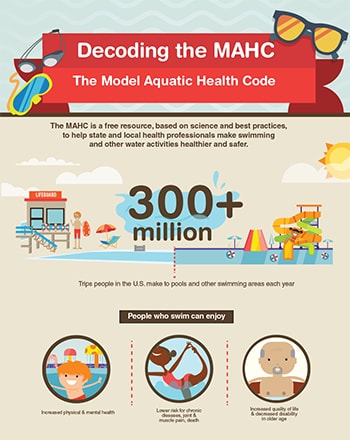Updated CDC Guidance for Healthy Pools
View Larger VersionView Larger VersionView Larger Version

Government agencies and the aquatics sector can use the Model Aquatic Health Code (MAHC) to make swimming and other water activities healthier and safer.
Few things are more refreshing than a swim in a cool, clear pool on a sweltering hot day. Swimming is an excellent form of exercise: it is low impact on the joints, naturally incorporates resistance training, and allows you to stay cool while getting your heart pumping.
At the request of local and state public health agencies and the aquatics sector, CDC led a national effort to develop a Model Aquatic Health Code (MAHC) to maximize the health benefits of swimming by minimizing the risk of illness and injury at pools, hot tubs/spas, and water playgrounds. The MAHC was first released in 2014. From the beginning, CDC committed to keeping the MAHC up to date with the latest science and industry practices.
CDC released the third edition (the 2018 MAHC) in July 2018.
What is the MAHC?
The MAHC is a free resource to help keep swimmers and aquatics staff healthy and safe. It is a set of voluntary guidelines, not a federal law. This means government agencies can choose to adopt none, some, or all of it. They can use it to:
- Create or update existing pool codes.
- Incorporate the latest science into their pool inspection programs.
Aquatics sector leaders don’t have to wait for a government agency to adopt the MAHC. They can implement key MAHC elements now to start improving health and safety at their facilities.
What are the benefits of the MAHC?
Benefits of using the MAHC are that it’s free, voluntary, and science based. In the short term, it might help reduce pool closures. Longer term, CDC expects that the MAHC could drive reductions in:
- Drowning – Drowning is a leading cause of unintentional injury-related death for children 1-14 years. Non-fatal drowning can cause brain damage resulting in learning disabilities or even permanent loss of basic functioning.
- Waterborne illness outbreaks – Nearly 500 disease outbreaks linked to pools, hot tubs/spas, and water playgrounds occurred from 2000 to 2014.
- Injuries linked with pool chemicals – Injuries linked with pool chemicals account for 3,000-5,000 emergency department visits each year. Almost half of the patients are under 18 years of age.
- Public pool and hot tub/spa closings – A recent study found that 1 out of 8 (11.8%) public pool inspections and 1 out of 7 (15.1%) of public hot tub/spa inspections resulted in immediate closure because of at least one identified violation that represented a serious threat to public health.
- Evidence of pool water contamination – Sampling of public pool filter water found over half of samples contained Pseudomonas aeruginosa (59%) and E. coli or feces (58%). Another study found 1 out of 12 (8.1%) pool filter water samples contained the parasites Cryptosporidium, Giardia, or both.
What is in the MAHC?
The MAHC includes science-based guidelines for:
- Public swimming pools
- Pools and hot tubs/spas in hotels, apartment complexes, and neighborhoods
- Waterparks
The guidelines address:
- Design and construction, such as secondary disinfection systems to kill chlorine-tolerant organisms and reduce risk of outbreaks.
- Operations and maintenance, such as lifeguarding standards to reduce drowning.
- Policies and management, such as training for pool operators to reduce pool chemical accidents, pool closures, and other issues.
The MAHC also includes an annex, a summary of the scientific rationale for MAHC guidelines.

Use the MAHC to improve health and safety at pools and spas.
What’s New?
The 2018 MAHC includes structural changes, clarifying edits, and new or revised guidelines in the areas of disinfection and water quality, lifeguarding and bather supervision, and risk management and safety. What you’ll find on the MAHC website:
- The 2018 MAHC, including model code language and scientific rationale for recommendations
- A summary of key changes from the 2016 MAHC and a track changes version with line-by-line edits
- Updated tools to help you compare your pool code and practices to those the MAHC recommends and other resources
- Updated MAHC infographic, factsheet, and other health promotion materials
Want to learn more? Visit these sites for more information:
